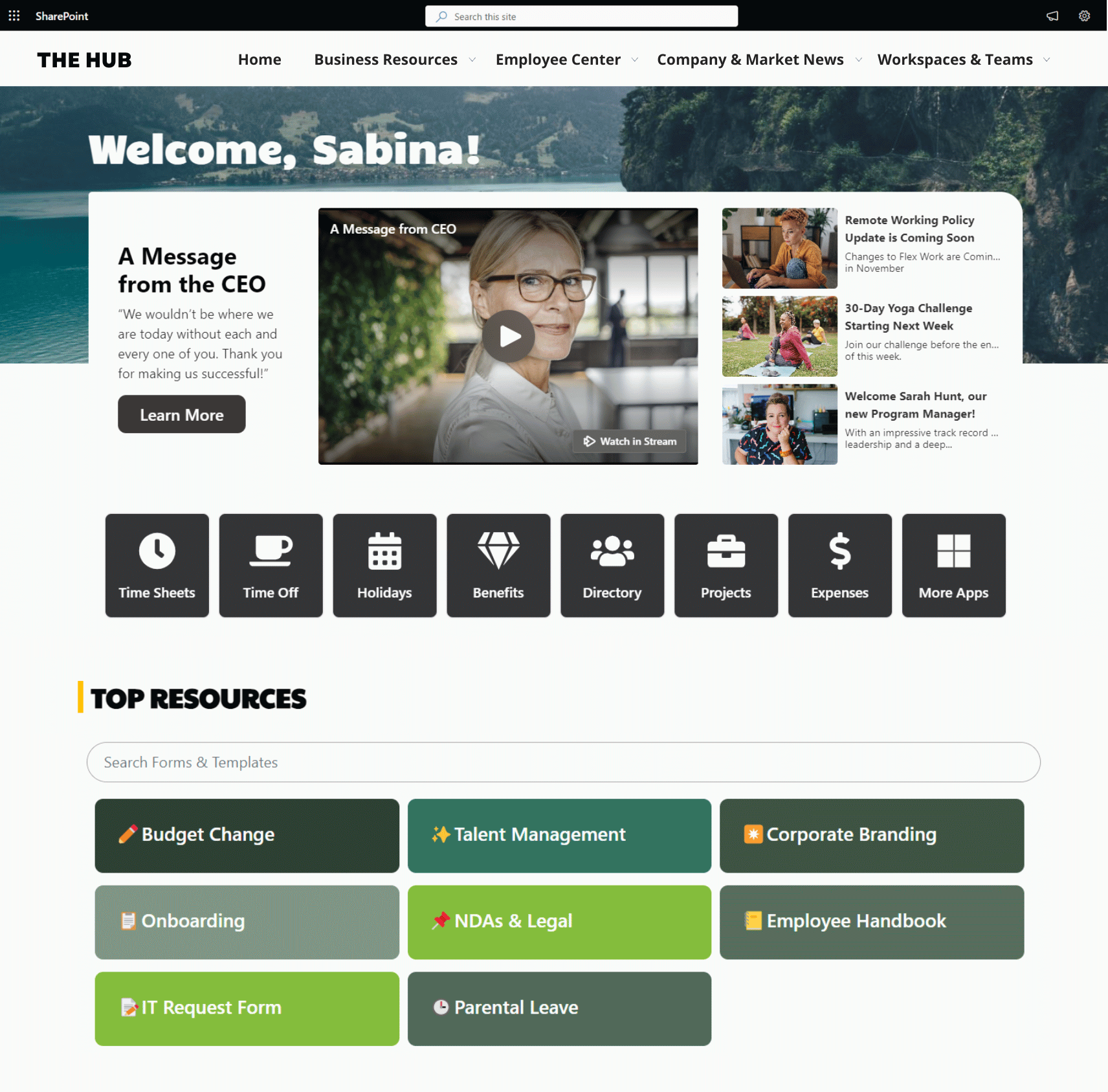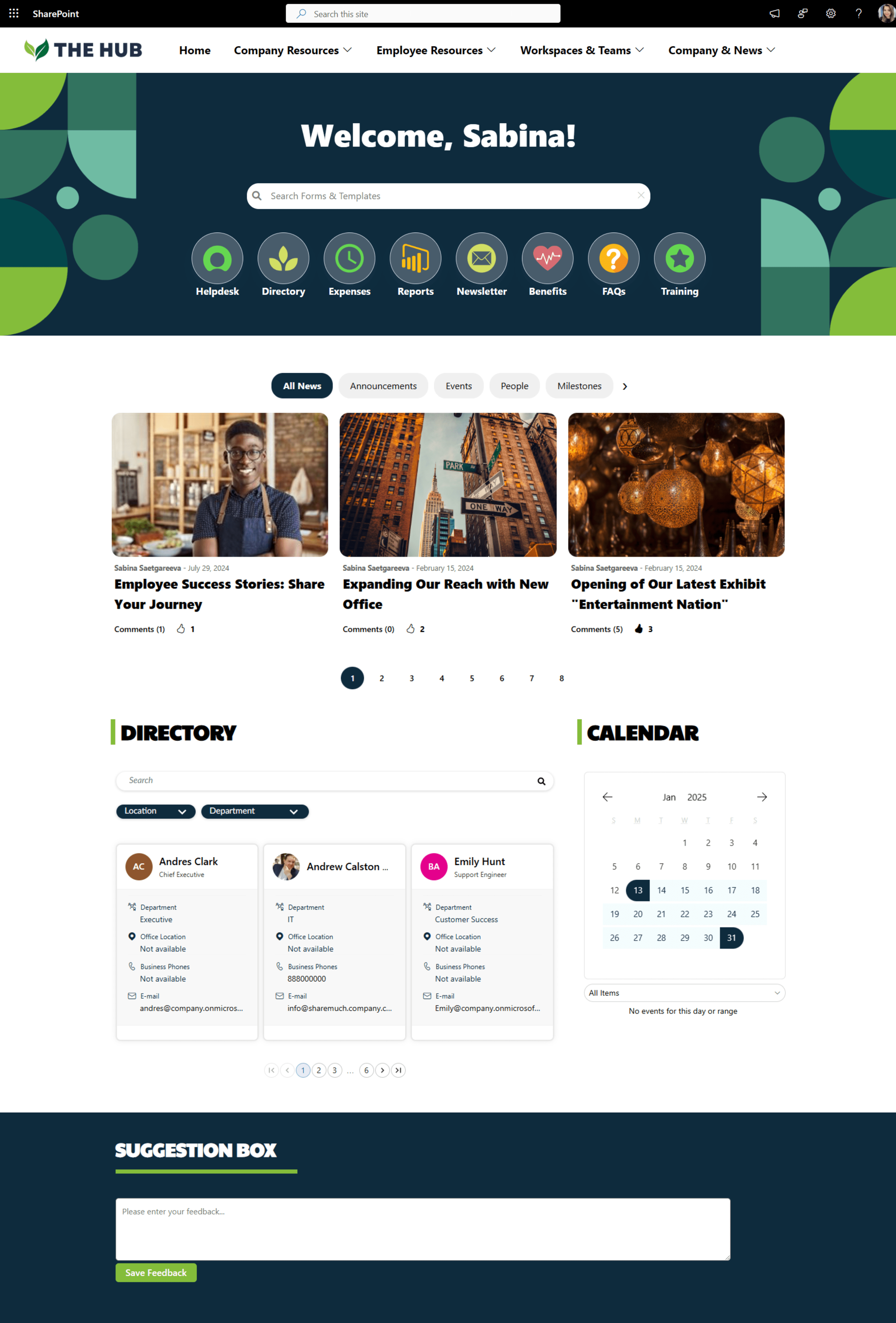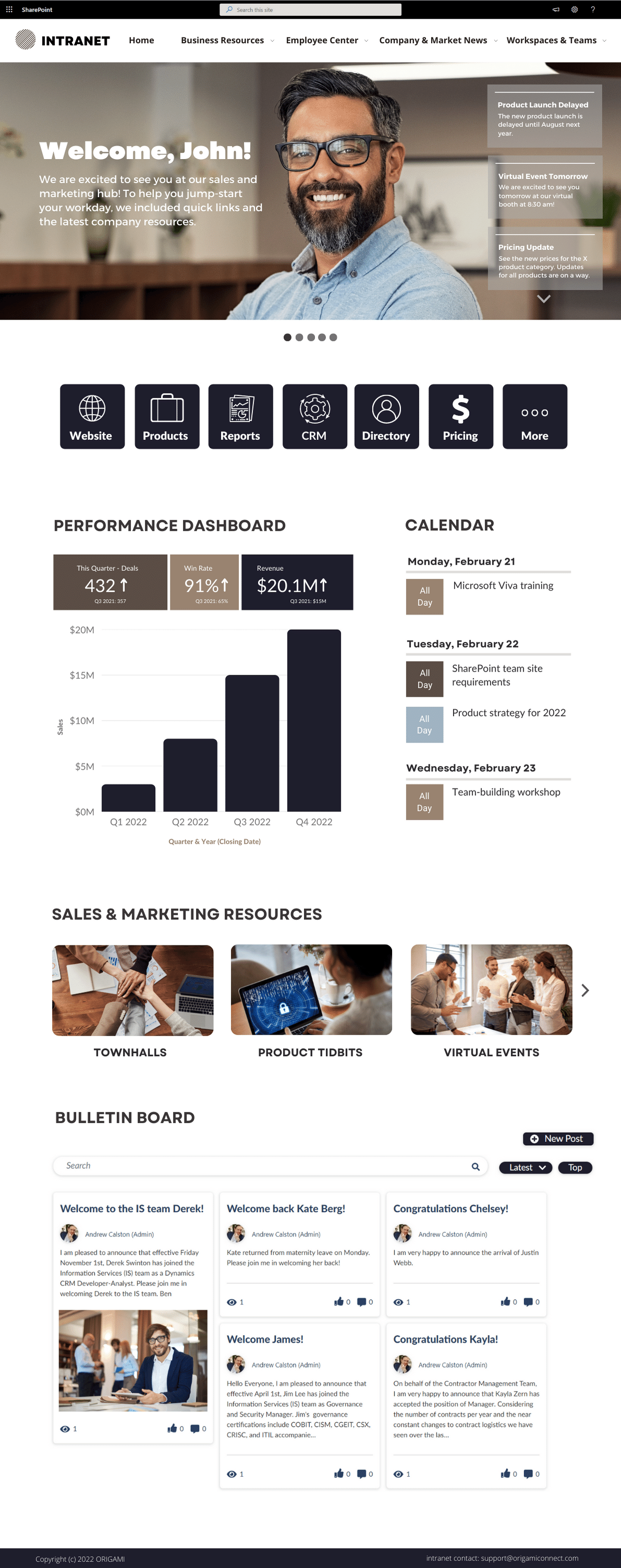Summary:
Many organizations switching from email and analog communication channels (like this bulletin board above) struggle with adoption of their new intranet platform. These 4 best practices below will boost your employee engagement, build an efficient communication strategy that includes people content, cultivate company culture and promote openness.
Internal communications are often associated with email blasts to everyone in the company or bulletin boards hanging in the staff area. Keeping track of updates and distributing important information in this way is not only time consuming, but often times ignored by employees.
With digital tools available, such as a SharePoint intranet, internal communications have evolved, but adoption rates often vary.
Here are the best practices that can help you get the most out of your digital communication tools.
1. Develop an Internal Communications Strategy
Switching from manual, bulletin board-style or email communication to digital involves a few more things than just moving your old content to the intranet.
Here are the key questions about content to consider:
Purpose
What is the purpose of communication (educate, inform or call to action?)
Does your communication cultivate the corporate culture?
Can you re-purpose stories featured externally with slight adjustments?
Frequency
How urgent is the communication?
How often do things get posted/updated?
Does the publication schedule overwhelm your users?
How will the frequency scale with the organization?
When do posts expire?
Audience and Roles
Does the communication need to be targeted to specific audiences?
Will leadership content be active on the intranet?
Who can post and where?
Who moderates content (if staff can post)?
Avoid
Duplicating the content. People will come to the intranet if original content is available on the intranet and not in numerous other places.
Only featuring leadership content. People love to hear stories, not just important communication.
2. Feature Employee Content
Employee content has many different forms and is a great way to engage others.
Interesting Fact: People are psychologically drawn to individual stories rather than statistics. This is related to how our brain loves to associate and relate our own experiences through the lens of others. In psychological studies, people remembered content presented through individual stories much better than the same content in statistical form.
Here are a few ideas to include engaging employee content on your intranet:
Shout-outs or kudos
Gives an opportunity to inform everyone about who was working on what, which goals have been met, and which members of the team are collaborating well.
Executives also appreciate this type of content to see how employees are performing.
Crowdsourcing ideas or feedback site
Gives people an opportunity to provide valuable feedback and have others agree and comment.
Excellent at building culture of collaboration, improvement and transparency.
People news
Provides a channel for employees to share their experiences at a conference, industry event, customer story etc.
Promotes awareness beyond corporate content.
Encourages other to contribute.
3. Cultivate Company Values
Out of several tools and types of content mentioned above, building culture is the desired outcome for the majority. Communication is not just about building awareness, it’s also about reinforcing and demonstrating organizational culture.
At Origami, one of our core values is Empathy. We try to embody that in the content we feature and highlight examples of empathy in executive decisions, employee and customer relations, and product strategy. Many of the stories we feature are related to how understanding and empathizing with customer pain points helped build amazing user experience on our recent projects.
Be sure to feature the content not just from the management team but also from the wider employee team. Content featured from the entire spectrum of the organization is perceived as more genuine and less scripted.
The communications team can leverage spotlight-type articles in their editorial calendar and help key content contributors to provide information for a spotlight story. For these spotlight type of articles, it’s best if the content shows as posted by the original author. This will draw attention and encourage other to submit their story.
4. Build areas for Feedback and Discussion
Companies which have an area for idea and feedback promote a culture of openness. To encourage employees to submit feedback, enable comments and likes so that the most popular ideas get featured at the top.
If you plan to add idea crowdsourcing to your intranet, here are the things to determine:
Set categories for submitted ideas to keep submissions on topic
Examples: Offices, Technology, Process, People, Facilities etc
Assign a moderator to update ideas as actioned/more information required/in progress
This is also a way to get back to the employee who submitted the idea
One of the ways for promoting this new area might be featuring a bright new idea in a company newsletter and mentioning that this was brought up using idea crowd-sourcing tool.
In Summary
Switching your communication to digital doesn’t have to be cumbersome. It requires an internal communication plan and strategy. Don’t forget to engage influencers within your organization to drive the content on your site to encourage others to contribute.
Effortless communication with Origami intranet tailored to your organization in 3-6 weeks.
Yaroslav Pentsarskyy is the Director of Product at Origami. He's also 8 time Microsoft MVP, speaker at many local and worldwide tech events, and a published author of several SharePoint related books.












Get inspired with six company intranet examples built on data collected from hundreds of intranet sites. See intranet best practices and design ideas to help you build an intranet employees will love.